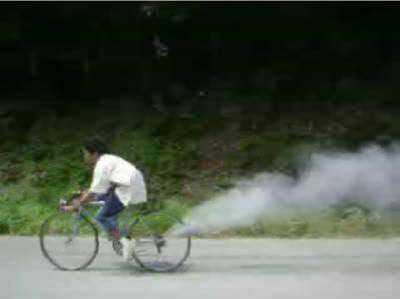Slow-motion footage of drone propellers shows how noise reduction works

Drones fly while rotating multiple propellers at high speed, which makes a loud buzzing noise during flight. Some drones have reduced noise by devising the shape of the propellers. In the 'Slow-motion movie of bringing smoke close to the drone propellers' filmed by hyper-slow YouTuber
Ultra Slow Mo Propeller Smoke Vortex - The Slow Mo Guys @tested - YouTube
The Slow Mo Guys filmed with the cooperation of Wing , a drone delivery service. Wing's drones are designed to transport goods, and some models can carry several kilograms of goods at speeds of over 100 km per hour .

In the image below, the four-blade propeller on the left is the silent propeller installed on Wing drones, and the one on the right is a standard three-blade propeller.

The propeller spins, bringing the smoke closer.

The movement of the smoke makes it clear how the air moves as it passes through the propeller. In a typical propeller, all the blades have the same shape, so air vortices are generated at equal intervals from the same place.

On the other hand, the Wing's silent propellers have blades of different lengths, which changes the point at which air vortices are generated, causing the vortices to collide with each other in an orbit.

A typical propeller (top) and Wing's silent propeller (bottom) are lined up like this. With a typical propeller, the air moves at equal intervals, generating noise of a certain frequency, but with Wing's propeller, the frequency of the sound generated by the collision of vortices between each other is blurred, suppressing the harsh noise.

In addition, The Slow Mo Guys also filmed in slow motion the moment when Wing's drone fell and broke.

The drone gradually collapses, starting from the tip.

Various parts were broken and the internal structure was exposed. Wing drones are designed to be fragile in order to minimize the impact on the surrounding environment in the event of a crash.

In addition, the various parts are connected with strong wires to prevent them from scattering.

Related Posts:







